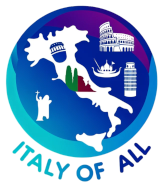The province of Cuneo, located in the Piedmont region of northwestern Italy, is renowned for its expansive landscapes, ranging from the majestic Alps to fertile plains. It is the largest province in Piedmont and one of the most diverse in terms of geography and culture, offering a rich tapestry of culinary delights, historical sites, and natural beauty.
Geographically, Cuneo covers a vast area that includes significant portions of the Italian Alps and numerous valleys such as the Susa, Valsesia, and Langhe, the latter being particularly famous for its rolling hills and vineyards. This diverse topography provides a rich environment for outdoor activities like skiing, hiking, and cycling, as well as agriculture, especially viticulture and fruit cultivation.
Historically, Cuneo has a rich history that dates back to ancient times but was particularly noted during the medieval and Renaissance periods. It was often a contested region due to its strategic location near the French border. Today, many castles and fortifications remain, highlighting its historical significance. The city of Cuneo, the capital of the province, retains a charming old town that reflects its medieval origins.
Culturally, Cuneo is a hub of traditional Piedmontese culture, known for its festivals and markets, such as the annual truffle fair in Alba, which attracts visitors from around the world. The region is also known for its strong culinary traditions, which are celebrated in numerous local dishes and products, particularly wines and chocolates.
Cuisine in Cuneo is characterized by rich flavors and local ingredients. The area is famous for products like hazelnuts, truffles, and wines such as Barolo and Barbaresco. Dishes like “tajarin” (thin pasta) and “brasato al Barolo” (braised beef with Barolo wine) showcase the local flavors. The region is also known for its cheeses, including Castelmagno, a semi-hard, crumbly cheese that is considered a delicacy.
Economically, Cuneo’s economy is diverse, with strong sectors in agriculture, particularly in wine and dairy production. The industrial sector is also significant, including manufacturing, food processing, and especially confectionery, with famous companies like Ferrero headquartered in the province. Tourism is another vital economic driver, supported by the region’s natural beauty, historical sites, and gastronomic reputation.
Despite challenges such as maintaining sustainable agricultural practices and promoting tourism responsibly, Cuneo is actively working towards leveraging its natural and cultural assets to enhance its economic profile while preserving the environment.
Overall, the province of Cuneo offers a compelling mix of natural beauty, historical depth, and cultural richness. Its ongoing efforts to balance economic development with environmental and cultural preservation ensure its continued importance in Italy’s Piedmont region and beyond.
Comuni in Cuneo Province:
- Bene Vagienna
- Baldissero d’Alba
- Bagnolo Piemonte
- Bonvicino
- Aisone
- Barge
- Bagnasco
- Belvedere Langhe
- Argentera
- Barbaresco
- Albi
- Acceglio
- Alba
- Bossolasco
- Bellino
- Benevello
- Bergolo
- Assolo
- Battifollo
- Beinette
- Alto
- Borgo San Dalmazzo
- Albaretto della Torre
- Barolo
- Bastia Mondovì
- Bernezzo
- Borgomale
- Castelmagno
- Casteldelfino
- Caprauna
- Castiglione Falletto
- Castelnuovo di Ceva
- Brossasco
- Castelletto Stura
- Castellino Tanaro
- Cavallerleone
- Caraglio
- Bra
- Casalgrasso
- Castelletto Uzzone
- Carrù
- Brondello
- Canosio
- Caramagna Piemonte
- Camerana
- Briga Alta
- Cartignano
- Cavallermaggiore
- Castino
- Briaglia
- Castagnito
- Castiglione Tinella
- Castellinaldo
- Busca
- Cortemilia
- Entracque
- Feisoglio
- Crissolo
- Chiusa di Pesio
- Celle di Macra
- Fossano
- Frabosa Soprana
- Cuneo
- Envie
- Clavesana
- Costigliole Saluzzo
- Corneliano d’Alba
- Cissone
- Cerreto Castello
- Ceresole Alba
- Cossano Belbo
- Centallo
- Cerretto Langhe
- Dogliani
- Cervere
- Cravanzana
- Cervino (CE)Cervo
- Frabosa Sottana
- Cervasca
- Crosa
- Diano d’Alba
- ** Cigliè
- Ceva
- Govone
- Gambasca
- Genola (CN)
- La Morra
- Marmora (CN) Marnate
- Marsaglia
- Lequio Berria
- Isasca
- Limone Piemonte
- Gorzegno
- Gottasecca
- Magliano Alfieri
- Marene
- Mango (CN)Mangone
- Magliano Alpi
- Manta (CN) Mantello
- Garessio
- Macra
- Frassino
- Guarene
- Grinzane Cavour
- Lequio Tanaro
- Lagnasco
- Lisio
- Ormea
- Morozzo
- Monforte d’Alba
- Montemagno (AT)Montemale di Cuneo
- Moiola
- Niella Tanaro
- Moretta
- Monasterolo Casotto
- Monteu Roero
- Montaldo di Mondovì
- Montelupo Albese
- Pagno
- Mombarcaro
- Neviglie
- Monticello d’Alba
- Paroldo
- Narzole
- Mombasiglio
- Monchiero
- Olmo Gentile
- Paesana
- Ostana
- Nucetto
- Novello (CN)
- Monasterolo di Savigliano
- ** Neive
- Montà
- Montaldo Roero
- Oncino
- Pamparato
- Murello
- Monterosso Grana
- Mondovì
- Montezemolo
- Monesiglio
- Murazzano
- Pezzolo Valle Uzzone
- Rivarossa
- Peveragno
- Perletto
- ** Sale delle Langhe
- Roccavione
- Polonghera
- Roaschia
- Robilante
- Priola
- Roccasparvera
- Roddi
- Pontechianale
- Quassolo
- Priocca
- Roccabruna
- Roburent
- Saluzzo
- Roccaforte Mondovì
- Pradleves
- PrezzaPriero
- Rocca Cigliè
- Rocchetta Belbo
- Pietraporzio
- Saliceto (CN)
- Rossa
- Racconigi
- Pocapaglia
- Piasco
- Rodello
- Roddino
- Pianfei
- Prunetto
- Piobesi d’Alba
- San Benedetto Belbo
- Rocca de’ Baldi
- Revello
- Piozzo
- Sale San Giovanni
- San Michele Mondovì
- Stroppo
- Scarnafigi
- Serravalle Langhe
- Santa Vittoria d’Alba
- San Damiano Macra
- Savigliano
- Sommariva Perno
- Santo Stefano Belbo
- Scagnello
- Sant’Albano Stura
- Sanfront
- Santo Stefano Roero
- San Ponso
- Sanfrè
- Serralunga d’Alba
- Sommariva del Bosco
- Villafalletto
- Villar San Costanzo
- Villanova Solaro
- Torre Mondovì
- Verzuolo
- Vignolo
- Trezzo Tinella
- Valgrana
- Vicoforte
- Valdieri
- Vezza d’Alba
- Verduno
- Valloriate
- Torre Bormida
- Vinadio
- Treiso
- Tarantasca
- Vernante
- Venasca
- Villanova Mondovì
- Viola
- Vottignasco
